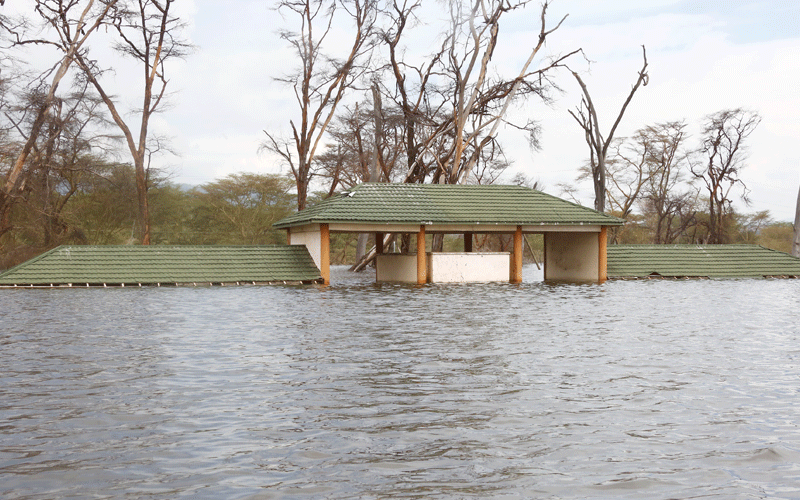Rising water levels force Rift Valley residents to evacuate

The government has urged Rift Valley residents living close to water bodies to move to higher grounds amid rising water levels in lakes and rivers around the region.
Government spokesperson Col Cyrus Oguna noted that in the past decade the lakes’ water levels had drastically increased posing a danger to locals living around them.
He said the government was concerned about the disruption of socio-economic activities among its residents saying they will put every effort in place to alleviate the suffering of those affected.
Speaking in Lake Nakuru National Park yesterday on the status report of the rising lakes, Oguna said the experts had established that a phenomenon of this kind was last witnessed in the country in 1963.
He said families mainly in the Rift Valley and Lake Victoria basin had been affected with homes and livelihoods destroyed after being displaced by the waters.
Water levels
According to Oguna, the rising lake water levels have been attributed to heavy rainfall causing an increase in water volumes getting into the lakes, dams and rivers thereby causing overflows into farms and homesteads.
Further, he noted that increased siltation in various lakes had also been cited as a contributing factor saying the main affected lakes include Naivasha, Bogoria, Baringo, Nakuru, Elementaita, Magadi, Turkana, and Olobollosat.
The phenomenon, he said, has had unprecedented impact on socio-economic activities adding that an estimated 5,000 homesteads have been destroyed with at least 6,000-7,000 families forced to move in with friends or into temporary camps.
In Lake Nakuru, Oguna said an estimated 350 families have been displaced in Mwariki sub-location losing their livelihood adding that in Baringo 3,087 households have been displaced, while in Turkana 758 households have also been affected.
“Farm lands, including food and cash crops have been submerged, leaving farmers with great losses.
Livestock have equally been lost. The affected areas have experienced increased human-wildlife conflicts as wildlife venture for grazing into human settlement areas,” said Oguna.
Flooding
Oguna noted that in Baringo, facilities such as schools, hospitals and hotels have been destroyed saying that cumulatively from March this year, 400 people have died in floods related incidents across the country.
He said there is serious concern on the development at the Turkwell Dam adding that it is potentially dangerous and likely to lead to flooding calling on residents of Katilu, Kalemnyang, Loyapat, Nakwomoru, Lodwar to immediately move to safer grounds until the situation normalises.
“All those who reside around any of the affected lakes and feel threatened by the rising water are also advised to move to more safe areas.
“It is equally important for all citizens to pay attention to flood alerts from relevant authorities,” said Oguna
On his part Nakuru County Deputy governor Dr Eric Korir further said there was a need to move to safer grounds saying the amount of downpour had increased in the last five decades affecting families in Nakuru County.
He said the county has provided needed humanitarian assistance to affected families saying it will go a long way in cushioning themselves.
“It is difficult but we are trying to manage the situation, the affected families have kickstarted their lives,” said Dr. Korir.
Nakuru County Commissioner Erastus Mbui said the rising waters had brought about fishing at the shores of the Lake saying surveillance will be intensified to ensure no one breaches and enters the park.








